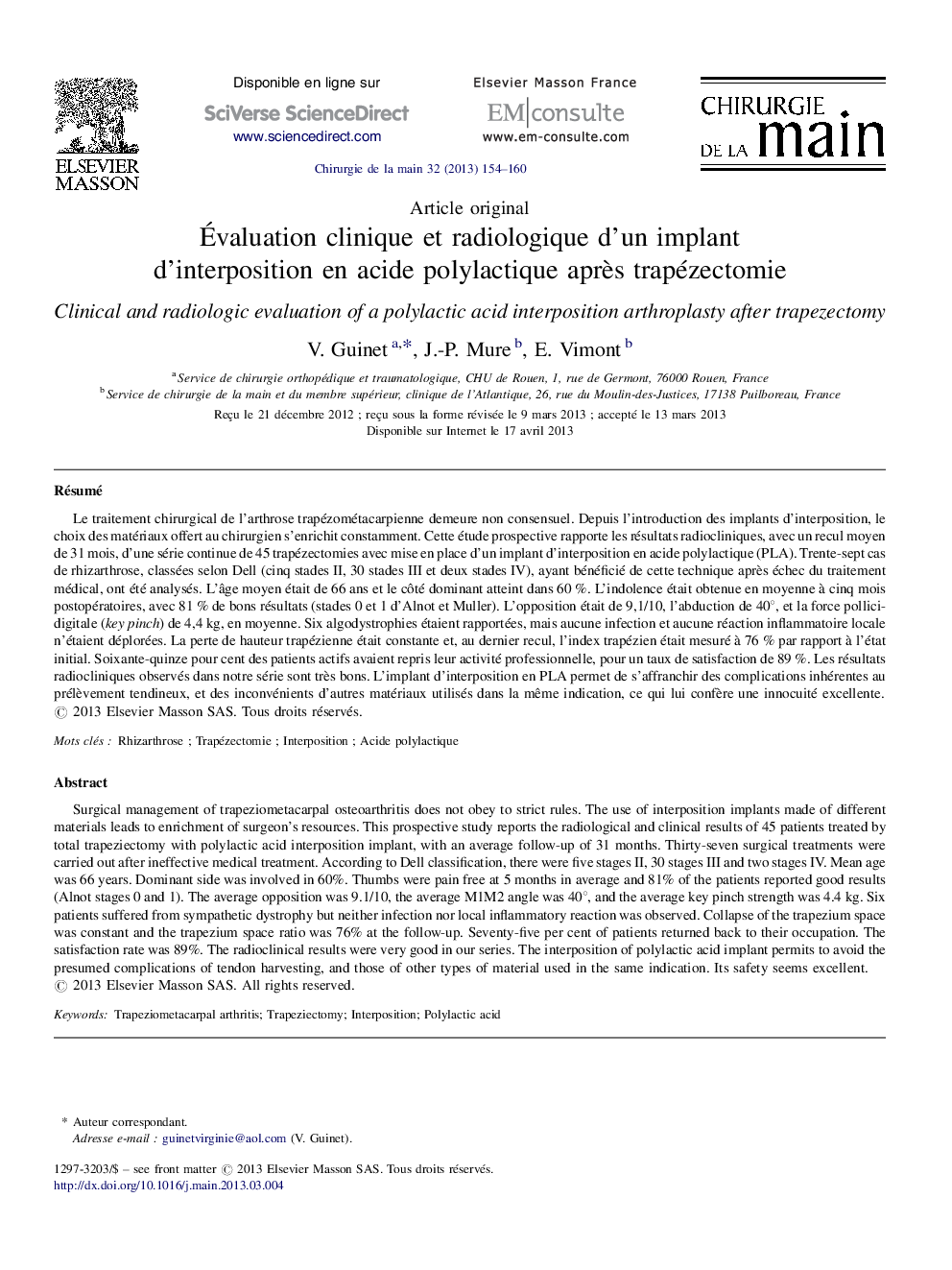| Article ID | Journal | Published Year | Pages | File Type |
|---|---|---|---|---|
| 4049226 | Chirurgie de la Main | 2013 | 7 Pages |
RésuméLe traitement chirurgical de l’arthrose trapézométacarpienne demeure non consensuel. Depuis l’introduction des implants d’interposition, le choix des matériaux offert au chirurgien s’enrichit constamment. Cette étude prospective rapporte les résultats radiocliniques, avec un recul moyen de 31 mois, d’une série continue de 45 trapézectomies avec mise en place d’un implant d’interposition en acide polylactique (PLA). Trente-sept cas de rhizarthrose, classées selon Dell (cinq stades II, 30 stades III et deux stades IV), ayant bénéficié de cette technique après échec du traitement médical, ont été analysés. L’âge moyen était de 66 ans et le côté dominant atteint dans 60 %. L’indolence était obtenue en moyenne à cinq mois postopératoires, avec 81 % de bons résultats (stades 0 et 1 d’Alnot et Muller). L’opposition était de 9,1/10, l’abduction de 40°, et la force pollici-digitale (key pinch) de 4,4 kg, en moyenne. Six algodystrophies étaient rapportées, mais aucune infection et aucune réaction inflammatoire locale n’étaient déplorées. La perte de hauteur trapézienne était constante et, au dernier recul, l’index trapézien était mesuré à 76 % par rapport à l’état initial. Soixante-quinze pour cent des patients actifs avaient repris leur activité professionnelle, pour un taux de satisfaction de 89 %. Les résultats radiocliniques observés dans notre série sont très bons. L’implant d’interposition en PLA permet de s’affranchir des complications inhérentes au prélèvement tendineux, et des inconvénients d’autres matériaux utilisés dans la même indication, ce qui lui confère une innocuité excellente.
Surgical management of trapeziometacarpal osteoarthritis does not obey to strict rules. The use of interposition implants made of different materials leads to enrichment of surgeon's resources. This prospective study reports the radiological and clinical results of 45 patients treated by total trapeziectomy with polylactic acid interposition implant, with an average follow-up of 31 months. Thirty-seven surgical treatments were carried out after ineffective medical treatment. According to Dell classification, there were five stages II, 30 stages III and two stages IV. Mean age was 66 years. Dominant side was involved in 60%. Thumbs were pain free at 5 months in average and 81% of the patients reported good results (Alnot stages 0 and 1). The average opposition was 9.1/10, the average M1M2 angle was 40°, and the average key pinch strength was 4.4 kg. Six patients suffered from sympathetic dystrophy but neither infection nor local inflammatory reaction was observed. Collapse of the trapezium space was constant and the trapezium space ratio was 76% at the follow-up. Seventy-five per cent of patients returned back to their occupation. The satisfaction rate was 89%. The radioclinical results were very good in our series. The interposition of polylactic acid implant permits to avoid the presumed complications of tendon harvesting, and those of other types of material used in the same indication. Its safety seems excellent.
